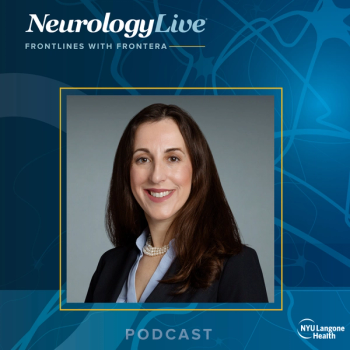
Understanding Pediatric Insomnia: Risk Factors, Clinical Diagnosis, and Care Management
Deepa Burman, MD, FAASM, co-director of the Pediatric Sleep Evaluation Center at UPMC Children’s Hospital of Pittsburgh, discussed the potential contributors to pediatric insomnia and the role of a thorough assessment for effective management.
Insomnia is a sleep condition defined by persistent challenges with falling asleep, staying asleep, or achieving restful sleep. It can occur in pediatric patients across a wide age range and can be influenced by a variety of factors.1 Evaluation typically involves a comprehensive approach by clinicians who may use a combination of caregiver interviews, sleep diaries, and objective monitoring tools to gain a more complete understanding of sleep behavior. Assessment can also include screening for other sleep disorders and conditions that can impact sleep, such as respiratory disturbances, neurologic syndromes, or emotional and behavioral disorders.
Nonpharmacologic approaches are widely utilized in the management of pediatric insomnia and can often serve as the initial focus of care. These strategies may include sleep hygiene education, behavioral interventions, and structured sleep routines aimed at improving overall sleep quality and consistency.2 In cases where nonpharmacologic measures do not sufficiently address symptoms, clinicians may consider recommending pharmacologic interventions. These treatments are typically used off-label and may include agents such as melatonin or other sedating medications. Overall, clinical decision-making in these cases may often take into account the limited pediatric-specific safety and efficacy data of interventions for this population.
At the recently concluded
NeurologyLive:What are some of the most common underlying factors that may contribute to chronic insomnia in children and teens?
Deepa Burman, MD, FAASM: When it comes to insomnia in children, it's a little bit different from insomnia in adults, in that we can divide insomnia in children almost by ages. Right now, based on the latest ICSD recommendation—which is the classification of sleep disorders put forward by the American Academy of Sleep Medicine—most of the insomnia is lumped under chronic insomnia disorder, and then we have different subtypes. In the past, we used to have different types of insomnia, but what was found was that because most insomnia follows similar lines of management, we grouped them into this one big family of chronic insomnia disorder and then branched it into different subtypes.
When it comes to pediatric insomnia, there are a lot of different subtypes, and most often we can actually branch them based on age. Say, for example, when you have a young child who is an infant or a young toddler, we have something called behavioral insomnia of childhood. Essentially, what that means—behavioral insomnia of childhood, sleep onset association type—is that the child has an asleep onset association with an object or a person or some stimulus that they want to happen every single night. Not only every single night at bedtime, but when we have those cycles of awakening during sleep, they would like that same stimulus to happen at that time.
I can give you an example. For example, a parent or a caregiver is rocking the child to sleep. When they complete a cycle after 1 hour or 2 hours, and their brain naturally awakens, instead of falling asleep by themselves, they look for that rocking in the middle of the night and soon have a hard time falling asleep without it. Similarly, nursing at bedtime when the child is falling asleep, or taking a bottle at bedtime—those are all associations. Sometimes it becomes really problematic when the child is unable to sleep without that stimulus. So that type of insomnia is called sleep onset association type insomnia.
Now, when the child grows up a little more, they start to experience the world and feel like they're missing out when they are sleeping. They don’t want to go to bed, and suddenly, when the parents or caregivers put them to bed, they are either hungry, thirsty, scared—they just want 1 more hug and kiss or 1 more story. That type of insomnia in a little bit older child, or school-age children, is called limit-setting type insomnia. What that means is either the child, or the caregiver is unable to establish limits around bedtime, and the child also has an inability to set those limits, to turn off the world, and fall asleep. So that's another type of insomnia.
Then you move on to the adolescent phase. I wouldn't say that it's really insomnia, but the natural tendency for a child in that adolescent age is to go to bed later and wake up later. However, the social clock or the social activities are not geared around that, so they are expected to fall asleep earlier. As a result, they have a problem falling asleep at a certain time and waking up at a certain time. So, you can have that kind of insomnia. You can also have what we call psychophysiological insomnia, which is more like adults and can be related to anxiety and other mood disorders.
All in all, I would say the risk factors that are associated with insomnia are:
- Behavioral factors—what are you doing not only at bedtime, but in the time leading up to bedtime, at bedtime itself, and during awakenings, and upon waking up?
- Medical disorders—for example, reflux issues, diabetes (waking up to go to the bathroom many times), or ADHD medications that can impact sleep.
- Mental health disorders—anxiety, ADHD, and so on.
- Medications—these can sometimes play a part.
So broadly, we can group the risk factors into behavioral, medical, and medication-related.
How do you approach evaluating insomnia in pediatric patients, and what role do comorbidities play in that process?
The next step, of course, is once the child presents with symptoms, assessing whether a child has insomnia or not. One of the biggest tools that clinicians or providers have in assessing someone with insomnia is good, thorough history-taking.
We talked a little bit about what the child is doing in the time leading up to bedtime. When we take a sleep history, it’s more of a 24-hour history as opposed to just the bedtime or nighttime behaviors, because what you do during the day impacts your bedtime, and how your sleep is at night can sometimes impact your daytime.
A thorough, complete history is really important. That includes checking a patient’s bedtime and wake time, how long it takes to fall asleep, in addition to checking past medical disorders, medications, and family history of insomnia. We know that sleep disorders run in families. In addition to that, looking into different medication or substance use—for example, caffeine in adolescents, vaping (which is a big one), or secondhand smoke exposure in younger children—can sometimes impact sleep.
So, going into a detailed history of all these things, in addition to a complete sleep history. Now, the sleep history should also include a history of other sleep disorders, like making sure there’s no evidence of sleep-disordered breathing (e.g., sleep apnea, snoring, gasping, choking), or symptoms of restless legs (like the urge to move the legs or strange uncomfortable sensations). Also, making sure the child does not have excessive daytime sleepiness for other reasons. So, not only taking a good medical history, but making sure that we are ruling out all those sleep disorders that can contribute to insomnia.
After a good, thorough history-taking, there are certain tools that clinicians or providers can use to diagnose or rule out insomnia. A sleep diary is one of the handiest tools. One of the best is a paper diary, where a child or caregiver can track the sleep-wake schedule: how long they were awake, how many times they woke up in the middle of the night, what medications or caffeine they are taking, etc. It’s a graphic representation of the sleep-wake record. That diary is easily available online on the American Academy of Sleep Medicine website. Anyone who wants to see what their sleep schedule looks like can print out the diary, fill it out, and review it.
Another tool is a more objective measure called actigraphy. Most of the actigraphy data is based on motion sensors. Traditionally, when we are awake, we move a lot; when we are sleeping, we don’t move as much. The actigraphy tracks that data as a surrogate for sleep and wakefulness. It’s a watch-like device that children or adolescents can wear to track their sleep schedule and gives a nice printout of when you went to bed, when you woke up, and whether you were awake in the middle of the night.
It does have some limitations, but along those lines, even some of the newer wearables—like Apple Watches or Samsung Watches—can track your schedule for sleep and wakefulness. So those are some tools that can complement evaluation of insomnia. But the best tool is still a good, thorough history.
Can you walk us through treatment framework? How do you tailor management strategies to different age groups or clinical presentations?
The next step, of course, is management of that insomnia. How do you take care of a child or an adolescent with insomnia? Now, the best long-term management for any insomnia—whether it’s in adults, children, or adolescents—is behavioral management. What happens is that often there is a trigger or cause for the insomnia. However, over time, that cause might go away, but the insomnia feeds itself and becomes this chronic loop, causing ongoing sleep issues. We have to break that loop.
The best way to do that is behavioral management of insomnia, and as an extension of that, something called cognitive behavioral therapy for insomnia (CBTI). We have a lot of sleep psychologists who are trained in CBTI. It’s a specific set of strategies used not only to help consolidate your sleep and fall asleep faster, but also to change some of the negative thoughts and associations related to bedtime.
It's a very exciting time for the field. It was amazing to see all the different sessions in pediatric sleep medicine, especially pediatric insomnia. The session I co-chaired was specifically related to insomnia risk factors and management in children and adolescents. There were a couple of really interesting talks—and I won’t go into detail because that data hasn’t been published yet—but the researchers looked at different apps that can be used to engage adolescents and help improve their sleep. As we know, social media and electronics are a big part of kids' and teens' lives. Can we use that to our advantage? We know these devices can disrupt sleep, but can we flip it? So, there were a lot of different apps discussed for sleep tracking and adolescent engagement.
One of my other favorite talks was about a little kit and workbook, and some massage therapy that a caregiver performed for the patient and how that positively impacted sleep.
There was also discussion about the judicious use of melatonin—how it’s not ideal to just walk over and grab melatonin without understanding the appropriate dose or how to use it. We have a consumer market where shelves are full of melatonin, and I even say that sometimes I go to the store, and though my kids are great sleepers, I look at the shelves and wonder, “Am I doing the right thing by not giving my child melatonin?” The dosages are often really high, and it can sometimes backfire in children. It's important to talk to your sleep physician or primary care provider before grabbing that bottle off the shelf and giving it to your children.
And then, of course, there are some medications that can be used for insomnia in children. But I would like to say here that there are absolutely no medications approved for insomnia management in children. All the medications we use are off-label, often prescribed for other conditions but with sedating side effects that we can sometimes use to our advantage. Children with anxiety, depression, or ADHD are more likely to need medication for insomnia. Most children without those issues can get better with just CBTI or behavioral management.
Transcript edited for clarity.
REFERENCES
1. Veeravigrom M, Chonchaiya W. Insomnia: Focus on Children. Sleep Med Clin. 2022;17(1):67-76. doi:10.1016/j.jsmc.2021.10.004
2. Ma ZR, Shi LJ, Deng MH. Efficacy of cognitive behavioral therapy in children and adolescents with insomnia: a systematic review and meta-analysis. Braz J Med Biol Res. 2018;51(6):e7070. doi:10.1590/1414-431x20187070
3. Burman D et al. Insomnia in Children in Adolescents: Risk Factors, Evaluation, and Management. Presented at: 2025 SLEEP Annual Meeting; June 8-11; Seattle, WA.
Newsletter
Keep your finger on the pulse of neurology—subscribe to NeurologyLive for expert interviews, new data, and breakthrough treatment updates.



















